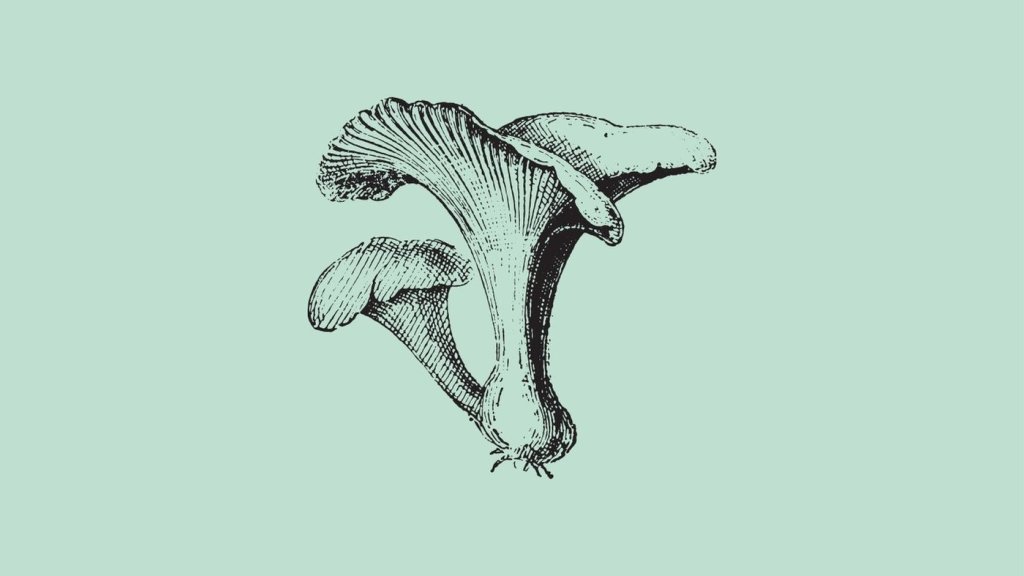If you want to know if you're looking at the false or true chanterelles, just cut them in half. When you split a false chanterelle, it lacks the white flesh that the true chanterelle possesses. Instead, the false chanterelle interior matches the color of the cap, with gills that are much more crowded.
Chanterelles Vs. False Chanterelles
The wild mushroom chanterelles are popular edible fungi for a reason. Not only are actual chanterelle mushrooms easy and fun to forage, but they’re also a culinary gem.
Some people consider them one of the best-eating mushrooms in the world.
In contrast, the false chanterelles (Hygrophoropsis aurantiaca), which often grow next to the edible species, is a similar species usually eaten by mistake.
What Are You Foraging For Right Now?
We're thrilled to hear your ideas. What would you like to submit today? Feel free to share your thoughts and experiences with us.
Can you forage false chanterelles? No, you shouldn’t forage for the potentially dangerous false chanterelle mushroom.

But, even seasoned foragers and mushroom experts find themselves face to face with the hazardous, false look-alike.
If you’re keen to forage and enjoy some tasty chanterelles, you must know how to identify and forage for chanterelles vs. false chanterelles.
Differences include:
| Chanterelles | False chanterelles |
| Yellow-orange color | Orange color |
| White inside | Orange inside |
| Irregular and wavy cap edge | Often a smoother cap edge |
| Forked ridges that run along the stem | Forked gills that are easy to break |
| Firmer flesh | Softer flesh |
| Fruity smell | Woody smell |
| Only grow on the ground | Can grow on the wood |
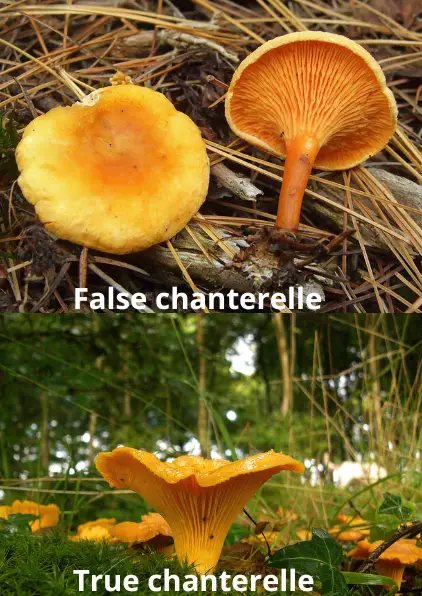
Are False Chanterelles Poisonous?
Technically, no. This wild mushroom finds itself in botanical books ranging from new to old as edible mushrooms.
But, if you chance upon these wild mushrooms on a coniferous forest floor, leave it be. False chanterelle is inedible.
This may sound like unusual advice when this bright orange mushroom is often listed as edible. But, ingestion can cause some worrying symptoms, such as food poisoning and hallucinations.
Another poisonous wild mushroom that you may come across in North America is the giant, dark orange-colored jack-o-lantern mushroom.
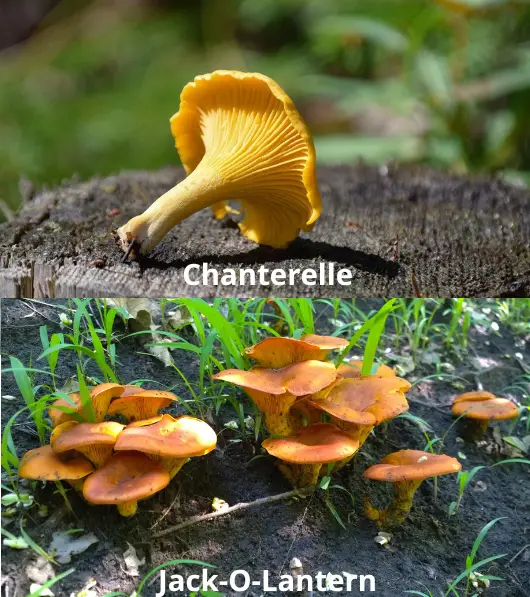
Also known by its scientific name of Omphalotus olearius, you’re likely to find this rare mushroom sporting true gills and hanging out on deciduous trees, decaying tree stumps, or buried roots.
You’ll know you’ve come across the jack-o-lantern inedible mushroom when you see pale green bioluminescent gills (when fresh).
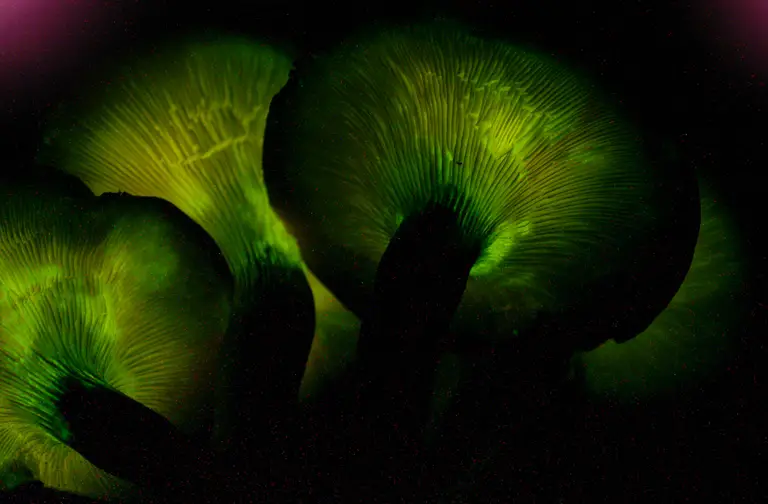
Can You Eat False Chanterelles?
As mentioned above, false chanterelles are becoming increasingly known as inedible wild mushrooms.
False Chanterelles: Any Uses?
Although the false chanterelle is not currently used medicinally, there is research that suggests this wild mushroom could be an aid as an anti-cancer drug.
But, because this wild mushroom is inedible in nature, it is hard to determine how you would use this species of fungi without causing poisoning.
Potentially, false chanterelle mushrooms have much nutritional value. However, because this range of mushrooms can’t be eaten, there is little point in detailing the dietary benefits.
What To Keep In Mind When Foraging Chanterelles
The issue with foraging for true chanterelle mushrooms is that they are so easily confused with similar members of the chanterelle family. But this isn’t a problem because the rest of the family (apart from the false chanterelle) are all good edibles.
Watch our video on when and where to look for chanterelles.
When foraging, many cross paths with the Cantharellus amethysteus. You may know this edible mushroom by its common name, amethyst chanterelle, and be able to recognize it by the purple scales that decorate the cap, the stem, and brown bruised flesh.
Although equally delicious, this wild purple-tinged chanterelle mushroom should only be picked when it litters the forest floor in great numbers.
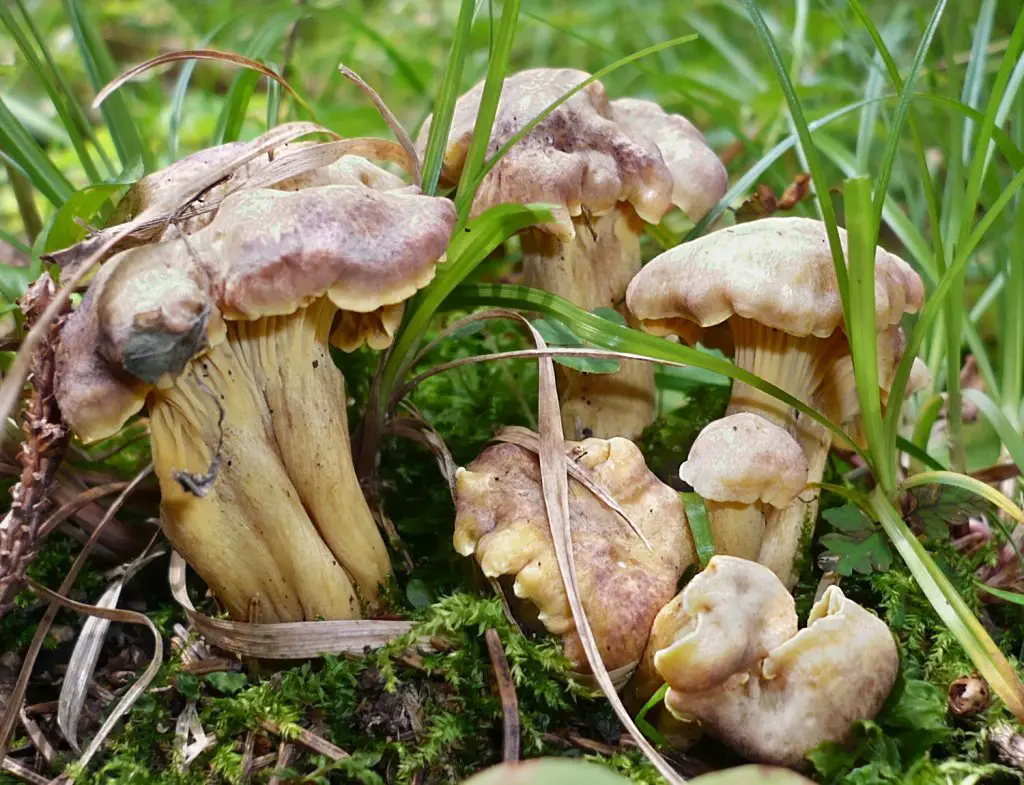
When foraging for the true chanterelle, don’t get carried away and ensure you practice care before popping any mushroomy-looking suspects in your mouth.
Getting into the great, wet outdoors in search of edible plants, herbs, fruits and fungi is one of Sarah’s favorite outdoor pursuits. She thinks there’s nothing better than combining her passion for hiking with the start of the foraging season. Sarah’s definitely not afraid of a little rain and dirt, it’s all part of the fun.

